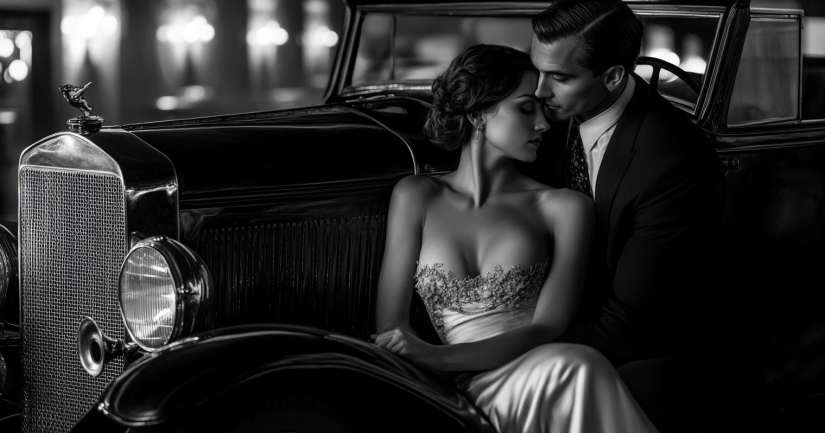
Think you know the highs and lows of Gatsby’s world, Test yourself with The Great Gatsby True or False Quiz, Test Your Knowledge of Fitzgerald’s Masterpiece. The Great Gatsby True or False Quiz challenges your ability to separate fact from fiction within F. Scott Fitzgerald’s novel. The Great Gatsby is filled with complex characters, hidden motivations, and themes of illusion, wealth, and disillusionment. Taking the Great Gatsby True or False Quiz will test how well you remember key events, character relationships, and the deeper meanings behind the novel’s most critical moments.
Jay Gatsby is one of literature’s most famous self-made men. He transforms himself from poor James Gatz into a wealthy, mysterious figure in pursuit of Daisy Buchanan. However, not all of his claims about his past are true.
How sharp is your Gatsby knowledge? If you’re ready to go deeper, test yourself with the Great Gatsby Chapter 1 Quiz to relive the novel’s beginning. And for a different kind of review, the Great Gatsby Order Of Events Quiz will test your sense of the story’s sequence.
Now’s Your Turn – The Great Gatsby True Or False Quiz
Gatsby’s Past and His Reinvention
Fitzgerald blends reality with deception, making it easy to misinterpret certain details. The Great Gatsby True or False Quiz will challenge you to recall the facts while analyzing the themes of ambition, betrayal, and the American Dream.
Gatsby tells Nick that he was born into wealth, attended Oxford, and inherited his fortune. In reality, he was the son of poor farmers who built his wealth through bootlegging and organized crime. The Great Gatsby True or False Quiz will test how well you remember the details of Gatsby’s carefully constructed identity.
The Truth About Gatsby and Daisy’s Love Story
One of the novel’s central conflicts revolves around Gatsby’s belief that Daisy still loves him and will leave Tom Buchanan. He dedicates his life to rekindling their romance, but the reality is more complicated.
Daisy does care for Gatsby, but she is ultimately unwilling to abandon her comfortable life with Tom. Her decision reveals the novel’s critique of materialism and the illusion of love built on past memories. The Great Gatsby True or False Quiz will assess your ability to distinguish Gatsby’s dream from the reality of Daisy’s choices.
The Circumstances of Gatsby’s Death
The climax of the novel comes when Gatsby takes the blame for Myrtle Wilson’s death, believing Daisy will protect him. However, she retreats into her privileged world, leaving Gatsby exposed.
Myrtle’s husband, George Wilson, is led to believe that Gatsby was responsible for her death. Acting on false information, Wilson kills Gatsby and then himself. The Great Gatsby True or False Quiz will test your ability to recall the tragic sequence of events that lead to Gatsby’s downfall.
The Social and Cultural Influence of the 1920s
The characters and events in The Great Gatsby reflect the larger cultural and economic shifts of the Jazz Age. Understanding these historical influences enhances the novel’s message.
- The Roaring Twenties created immense wealth, but only for a select few. Gatsby’s rapid rise represents new money, but he is never truly accepted by old-money elites like Tom and Daisy.
- Prohibition led to an increase in underground crime and illegal business dealings. Gatsby’s fortune is tied to bootlegging, highlighting how wealth was often built on corruption.
- Women gained more social freedom, but marriage remained a source of security. Daisy’s reluctance to leave Tom reflects the limitations placed on women despite their newfound independence.
- The American Dream was increasingly questioned. Gatsby’s death proves that ambition and wealth cannot overcome deeply ingrained social barriers.
Prepare for Your Great Gatsby True or False Quiz
Now that you have reviewed Gatsby’s past, his love for Daisy, and the tragic conclusion of his story, you are ready to take the Great Gatsby True or False Quiz. Understanding the difference between perception and reality in the novel is key to grasping Fitzgerald’s critique of the American Dream.
Test your comprehension with the Great Gatsby True or False Quiz and see if you can separate fact from illusion in this timeless literary classic.
Think you know The Great Gatsby? Take The Great Gatsby Book Quiz and find out!
The Great Gatsby General Knowledge – FAQ
The main theme of The Great Gatsby critiques the American Dream, highlighting how the pursuit of wealth and status can lead to moral decay and disillusionment. Through Jay Gatsby’s rise and fall, F. Scott Fitzgerald shows how greed and social stratification corrupt this dream.
The primary characters include Jay Gatsby, the mysterious millionaire; Daisy Buchanan, Gatsby’s lost love; Nick Carraway, the narrator; Tom Buchanan, Daisy’s wealthy and arrogant husband; and Jordan Baker, a professional golfer and Daisy’s friend. Each character represents different facets of society, illustrating the complexities of relationships and social dynamics during the Jazz Age.
Published in 1925, The Great Gatsby is set during the Roaring Twenties, a time of economic prosperity, cultural change, and social upheaval in the U.S. This context shapes the novel’s themes of excess, the illusion of the American Dream, and the moral ambiguity of the era.
Fitzgerald uses various literary techniques, including symbolism, foreshadowing, and vivid imagery. The green light at Daisy’s dock symbolizes Gatsby’s unattainable dreams, while the valley of ashes represents moral decay. First-person narration through Nick allows readers to connect with the story on a personal level, deepening its emotional impact.
The novel addresses social issues like class disparity, gender roles, and the moral consequences of wealth. Fitzgerald critiques the superficial lifestyle of the wealthy elite and highlights the struggles of lower social classes, while also showcasing the evolving dynamics of gender roles in the 1920s.
